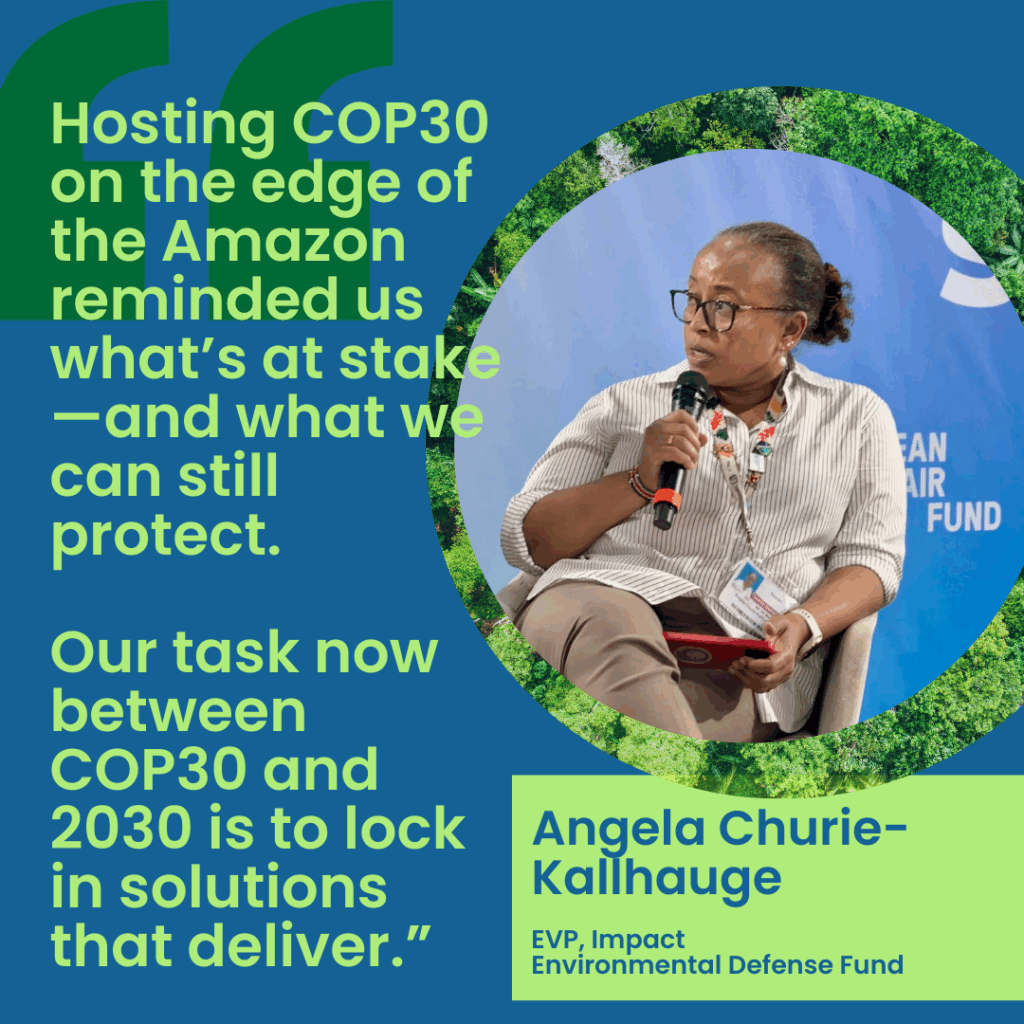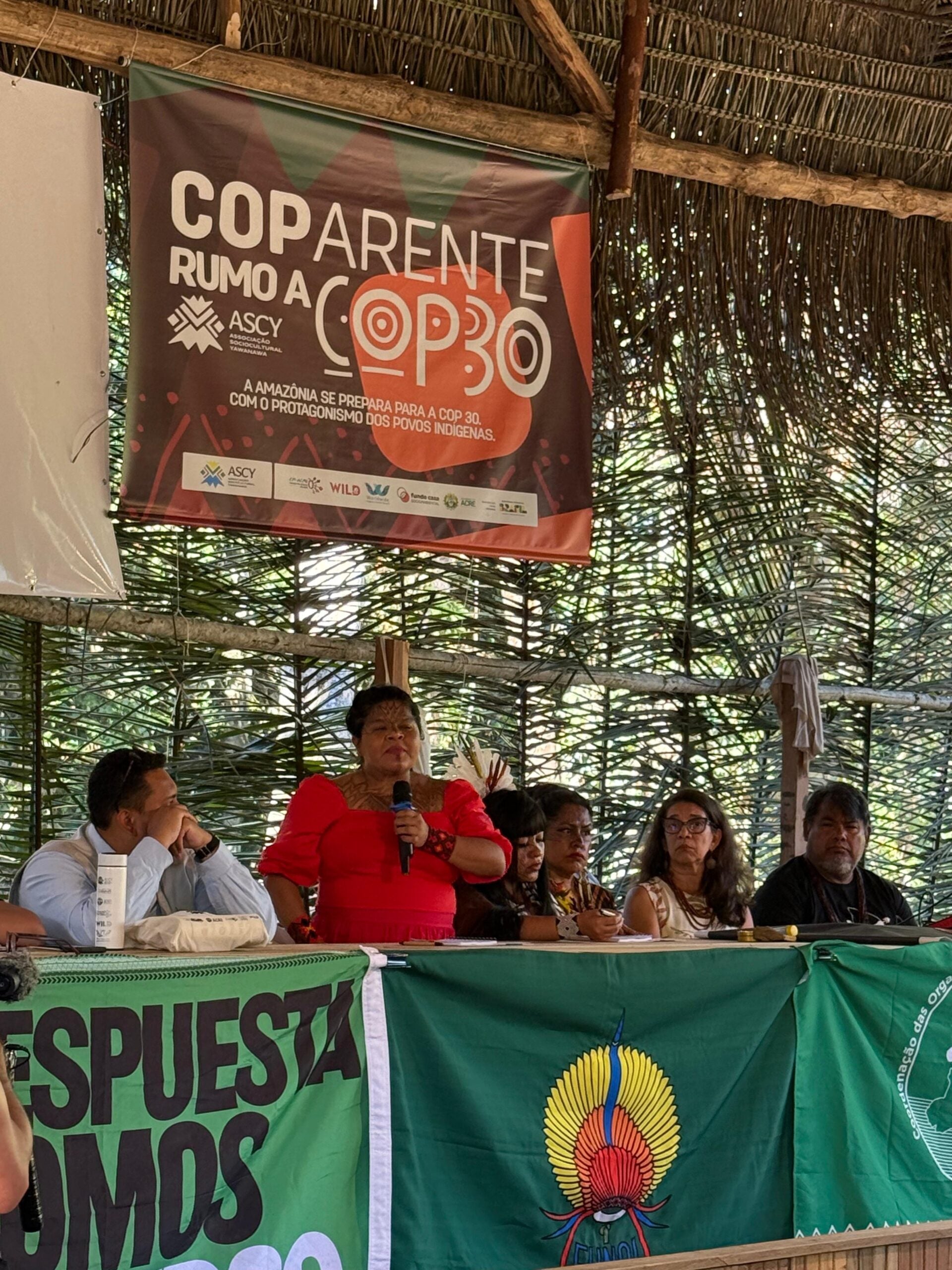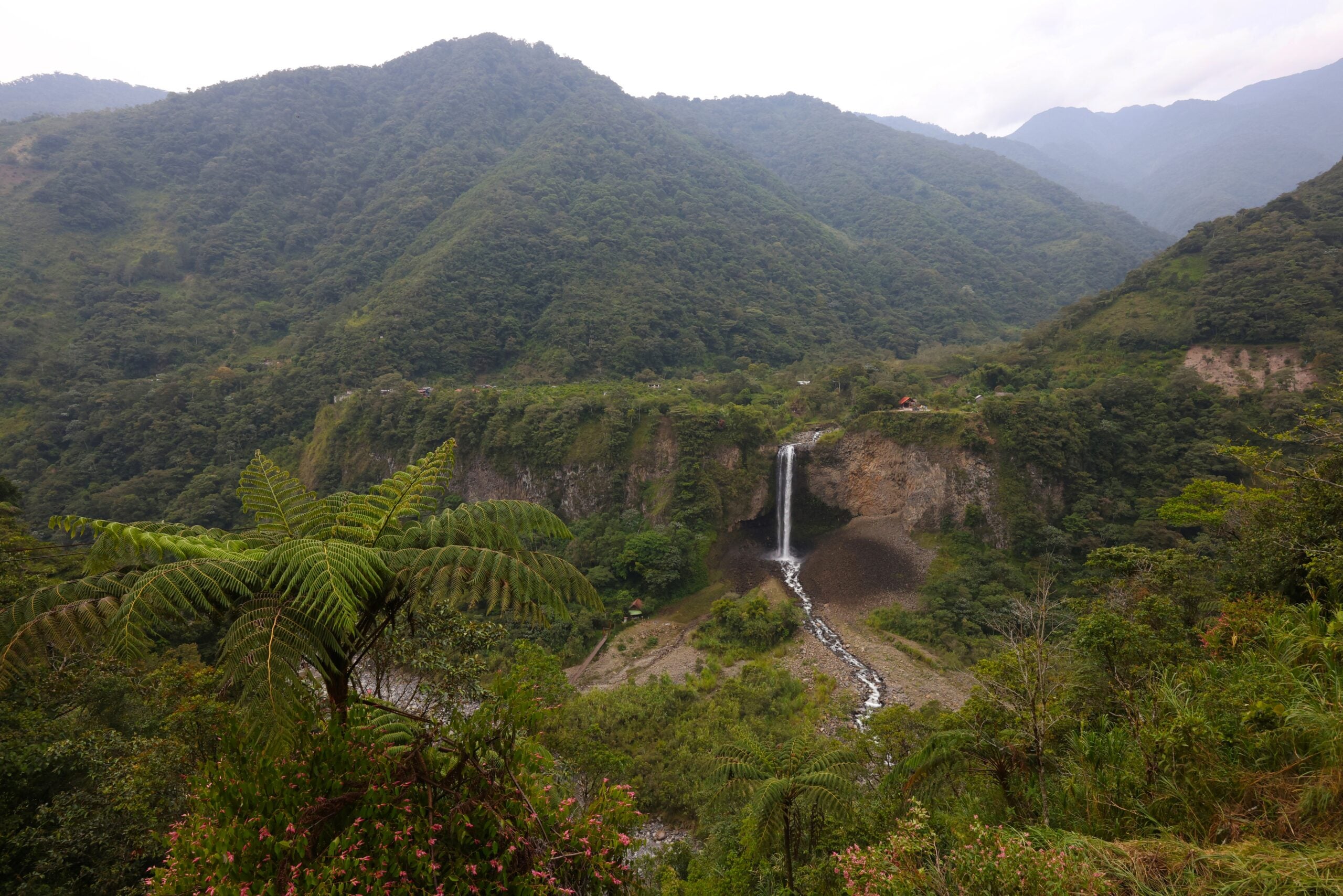As COP30 in Belém came to a close, it didn’t end with a single, tidy gavel. Instead, it wrapped up as a complex package—balancing new initiatives for implementation with the COP decision itself, and reflecting the mutirão spirit of compromise across diverse voices.
We came into COP30 knowing we are still falling short of our climate goals. Yet over these two weeks, we also saw real movement: beyond the formal outcome text, countries, communities, businesses, and civil society began pulling in the same direction.
The pavilions and dialogues revealed an axis of action—solutions we can deploy now and build on tomorrow. Global ambition still falls short, but the inspiration here was clear: the future depends on how quickly we turn ideas into implementation.
Ultimately, COP30 must be assessed in its entirety, not just through the lens of negotiations. For EDF, we measure success at COP30 through partnerships ignited, finance mobilized, and voices engaged.
From tropical forests to the food sector, air quality to adaptation, here are the bright spots that EDF is building on after Belém:














